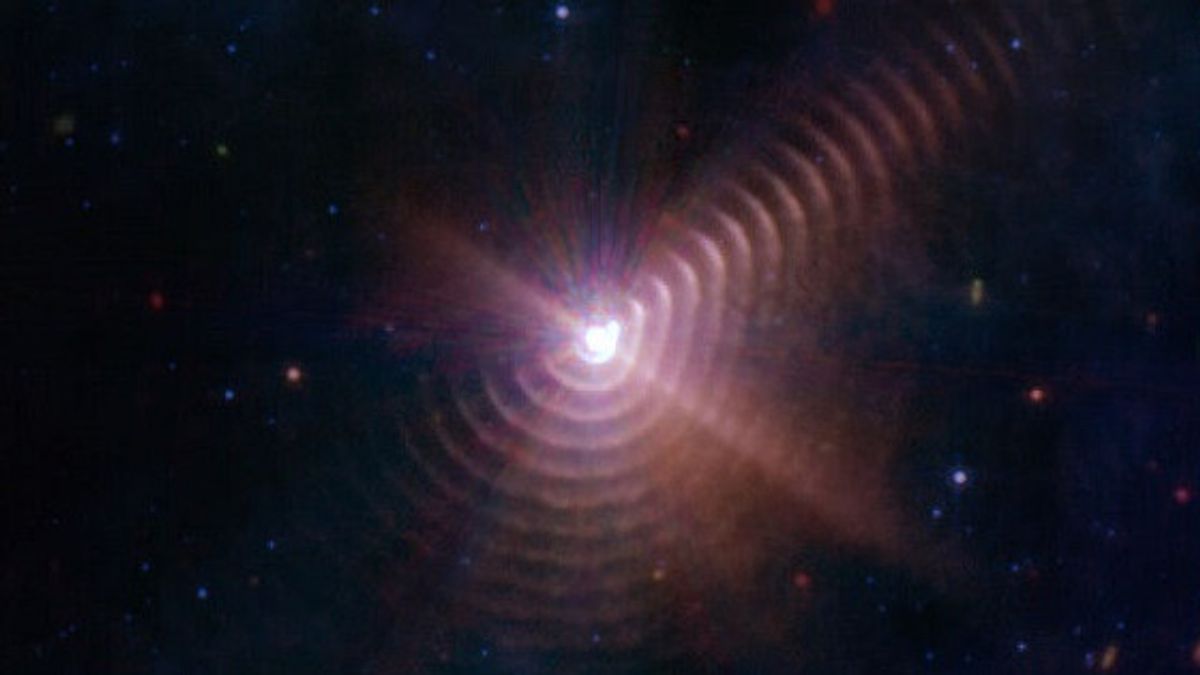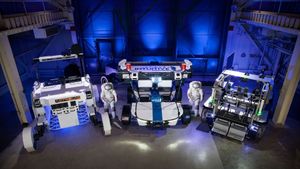JAKARTA - Astronomers discovered stunning images of 17 concentric dust rings resembling cosmic fingerprints in James Webb's Space Telescope observations.
The formation of the dust ring was created due to the interaction of two giant stars, known as the Wolf-Rayet 140 (WR140) binary, which is more than 5,000 light years from Earth.
The ring forms every eight years when stars pass close to each other in its elongated orbit. During this approach, the solar wind that blows 1,864 miles per second from the stars collides and causes the gas flowing from the stars to be compressed into ring-shaped dust.
Like a clocked needle, WR140 emits a circle of smoke that is woven every eight years, which then expands in a balloon-like stellar wind, said study co-author published in the journal Nature Astronomy, Prof Peter Tuthill of the Sydney Institute for Astronomy at the University of Sydney.
Eight years later, when the binary returns to its orbit, another ring appears, just like before, flowing out into space in the bubble that was previously, like a group of nested Russian giant dolls.
Produced for about 130 years, the 17 rings were larger than the Solar System. The WR140 binaries consist of two massive Wolf-Rayet stars and a larger blue supergiant star, one of the most massive star classes.
Launching The Guardian, Thursday, October 13, born with a mass 25 times bigger than the Sun, Wolf-Rayet is a star close to the end of its stellar life cycle.
Wolf-Rayet stars produce strong winds that drive large amounts of gas into space, the binary's inner star is thought to have lost at least half its original mass through the process.
When carbon and heavy elements are blown into space, they are compressed on the boundary where the winds of the two stars meet.
"It's not just a spectacular picture, but this rare phenomenon reveals new evidence of cosmic dust and how it can survive in a harsh space environment," said Webb's colleague at the British Center for Astronomy Technology and co-author of the study, Dr Olivia Jones.
Jones added these observations could provide new insight into how first-generation stars seed their environment with dust and gas that leads to the next generation of stars in the early universe.
The English, Chinese, Japanese, Arabic, and French versions are automatically generated by the AI. So there may still be inaccuracies in translating, please always see Indonesian as our main language. (system supported by DigitalSiber.id)













